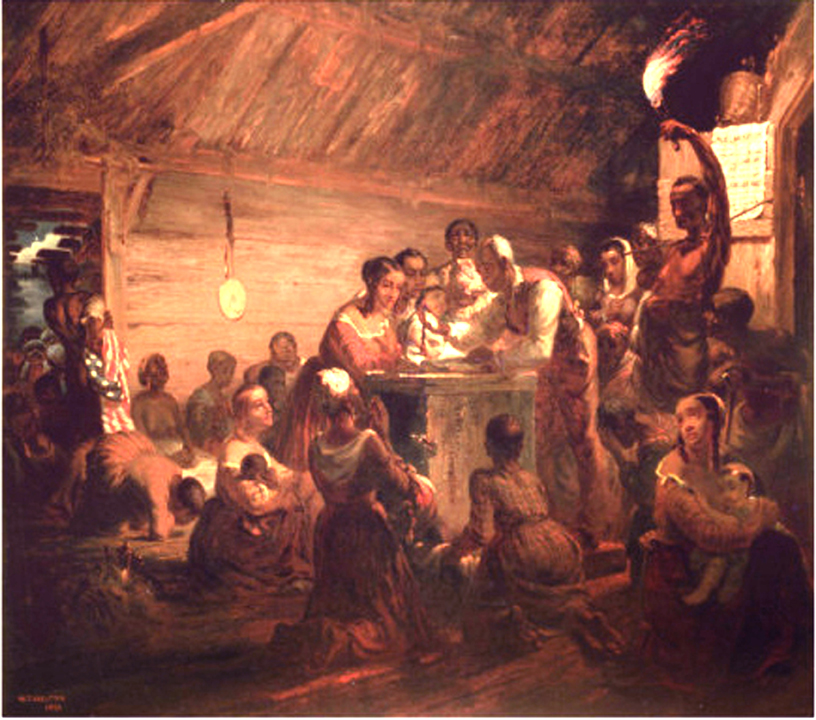
Dorchester Illustration no. 2500 Waiting for the Hour
Carlton was a portrait and genre painter who was active in the Boston area from 1836 till after the Civil War. He moved to Dorchester in the 1850s and lived a little west of Four Corners. Perhaps his most famous painting is the one called Watch Meeting –Waiting for the Hour, now in the collection of the White House. He depicted a group of slaves waiting for the Emancipation to take effect on January 1, 1863.
The following is from:
Memorial Biographies of the New England Historic Genealogical Society Volume VIII 1880-1889. (Boston: The Society, 1907), p. 349-350
William Tolman Carlton, of Boston, Massachusetts, a Resident Member from 1871, was born in Boston, January 30, 1816, and died in Dorchester, Massachusetts, June 28, 1888.
He was the son of William Leeds and Mary Jane (Millet) Carlton. The name of Carlton was spelled Kelton by the earlier generations, and the change to Carlton was made by William L. Carlton, father of the subject of this sketch.
The greater part of his childhood was passed in his father’s residence at the corner of Williams Court and the present Court Square, where his father carried on a West India goods store in the lower front of the building. Later the family removed to Dorchester, where he was educated in the common school and the Dorchester Academy.
Conditions of health frustrated an intention on his part to prepare for college, and he directed his attention to an artist’s career. He spent several years in Europe, mostly in Italy, and journeyed in Germany and France for the examination of art galleries, and followed his career of an artist for part of a year, in Paris. He returned to this country in 1840, and practiced portrait painting, and gave instruction in drawing to private classes.
Between the years 1847 and 1850 he was in Albany, New York, where his work was the painting of portraits, mostly. He resumed his professional work in Boston, in 1850, and during the following year, was selected by Mr. George Hollingsworth, an artist of repute, as his assistant in carrying on the school for free instruction in art, which had then lately been opened by the Lowell institute. The school was closed after twenty-seven years because the method of instruction introduced in 1850 was generally adopted by teachers in schools of free instruction and in private schools.
He married, June 1, 1864, Mary Elizabeth Blanchard, of Portland, Maine. This was her name by adoption, Raynes having been her ancestral name.
